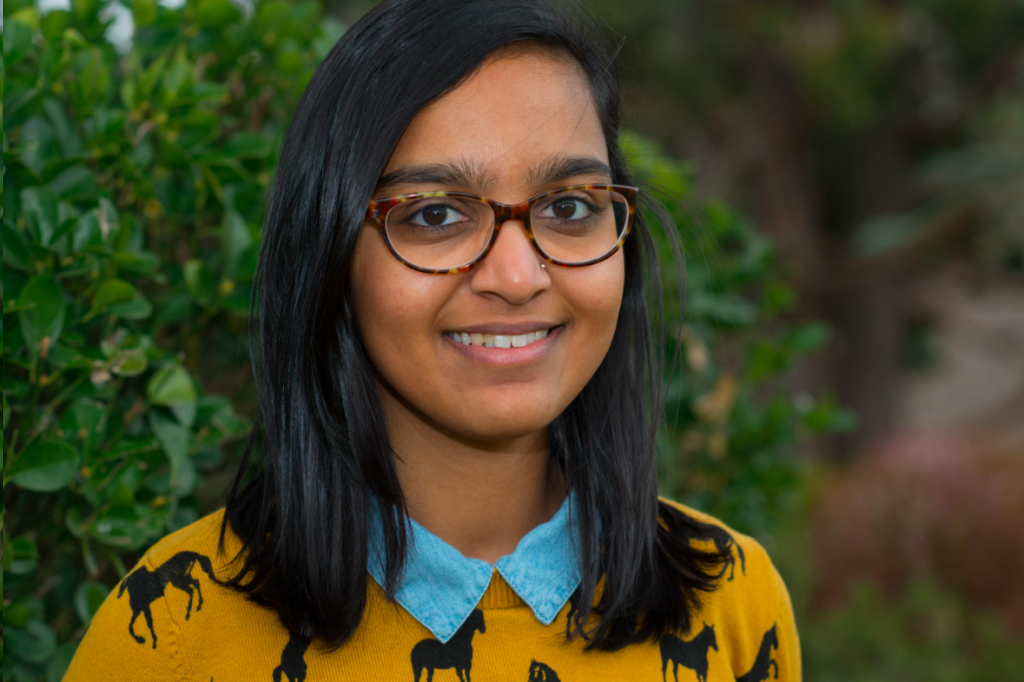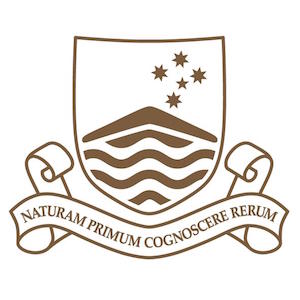The Rise Of ‘Feminartsy’: How Writer Zoya Patel Turned Dumb Online Abuse Into Something Great
It's so satisfying when insults backfire.


It's time to discover your passion
Meet ANU alumna Zoya Patel, who’s changing the nature of creative communication.
–
It’s so satisfying when insults backfire well. Think Carrie Fisher expertly correcting people who give her grief for Leia’s bikini and Winston Churchill talking to literally anybody. Or, as it happened in 2014, Australian writer Zoya Patel. When a grumpy men’s rights activist accused her of being a “feminartsy” — a “hip-hop happening modern gal … in the seventh year of a three-year creative writing degree” — a bold new feminist literature and arts journal of the same name was born.
“He was basically making fun of indie hipster girls who are really into feminism, and I thought it was an amusing way of getting cranky at us,” says former Lip magazine editor-in-chief, ANU alumna and ACT Young Woman of the Year. “[It] was kind of a cute play on words.”
While she points out Feminartsy’s reference to the term used to denigrate feminists, ‘feminazi’, can also be problematic, she hopes audiences will appreciate the spirit of the re-appropriation. “I still like the name, but I am keen to hear different views on it.”
–
Creating Room To Think
Combining great new fiction, poetry and memoir with long-form articles, profiles and commentary, Feminartsy shows rather than tells what it means to be a feminist — and especially a feminist artist — in Australia today. This is a pursuit Zoya juggles with her full-time work as corporate relations and advocacy manager for YWCA Canberra as well as other writing projects. Contributors are paid through funds raised by monthly Canberra-based events, like Feminartsy’s popular ‘story-share’ panel discussions.
“I wanted to explore gender in writing in a different way,” she says. “Feminartsy to me is about looking at the ways gender subtly influences everything in our lives.” (If you haven’t checked it out before, Zoya recommends memoir pieces by Alice Ridge and Yen Eriksen, that she says “look at broader issues outside of the exact experience being explored”).
Feminartsy marks a change of content and pace for Zoya, who began writing for long-running feminist magazine Lip when she was just 15, and saw the mag through a period of intense growth as editor from 2010 to 2014. The journal deliberately moves away from this fast-paced world of news and opinion to more experimental works that delve into feminism a little differently.
“I think a lot of writers who want to interrogate feminist topics don’t necessarily want to write news or opinion, and it seemed to me that’s where most of the opportunities are,” she says. “I felt like Feminartsy could try to offer a space that was a bit different.”
Supporting artists’ development through editing and professional opportunities is also important for the editor, with the journal launching a series of paid residencies for four budding Canberra-based writers this year (applications close at the end of the month). As an arts graduate who knows all about the reality smash of post-graduation, Zoya is especially keen to pass some of her life lessons on in this way.

–
Graduating In Reality
After studying gender studies and English at ANU while rapidly building a writing career at Lip, Zoya says moving to Melbourne after graduation was a total kick in the face. “I just spent months and months unemployed — it was awful. And I guess during that period there were also a lot of insecurities around writing, and certainly a lot of insecurities around Lip.”
While she says her university experience was “fertile ground” for writing and developing a political awareness of the issues surrounding young women — especially in her role as Women’s Officer for the students’ association — the reality of post-uni life was a struggle. However, it’s this same feeling that lets her appreciate how far she’s now come.
“I sometimes feel like I’ve got the Holy Grail,” she says when I congratulate her on achieving not only a full-time job that involves writing and feminism — her two passions — but the success of Feminartsy as well. “I wish I could go to the Zoya of three years ago and say, ‘It actually will be okay. You don’t know this, but trust me: it’s going to be fine’. That’s true of anyone. You do find your spot eventually; it’s just hard.”
After moving back to Canberra and wrapping up a Master’s degree in Communication, Zoya felt there was a real need for a creative feminist space in the city. She says the reaction to the mag from her hometown, especially through Feminartsy events, has been “overwhelmingly positive” in a way she didn’t expect at all.
“I thought there’d be a community around Feminartsy, but I didn’t expect it to be as big as it is — and also as separate from my own personal network… That’s something that I really want, because I don’t want to feel I’m creating another clique. I want it to be accessible.”
As Feminartsy steadily grows, attracting not only artists interstate, but a strong band of editorial staff and a steering committee of female writers, Zoya hopes the journal will continue its upward spiral.
“We’ve got all the plans in motion in the background, and this year will be about getting down some of the systems we already have in place and growing the whole thing.”

A bonus message to the douchebro who hassled Zoya in the first place – Ed <3
–
Feature image by Anna Mayberry.
–
ANU: a university experience like no other. Access a broad range of scholarships, receive learning and personal support to stay on track, choose from Australia’s most unique degree offerings or an array of global study opportunities.